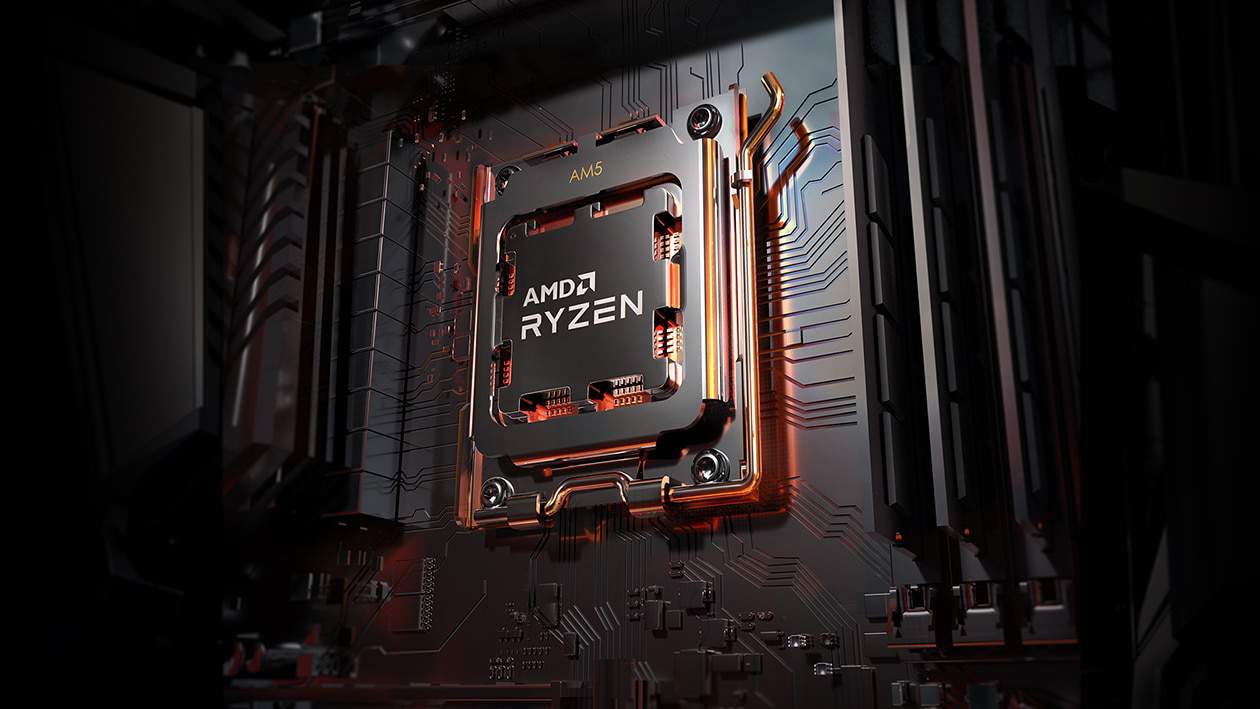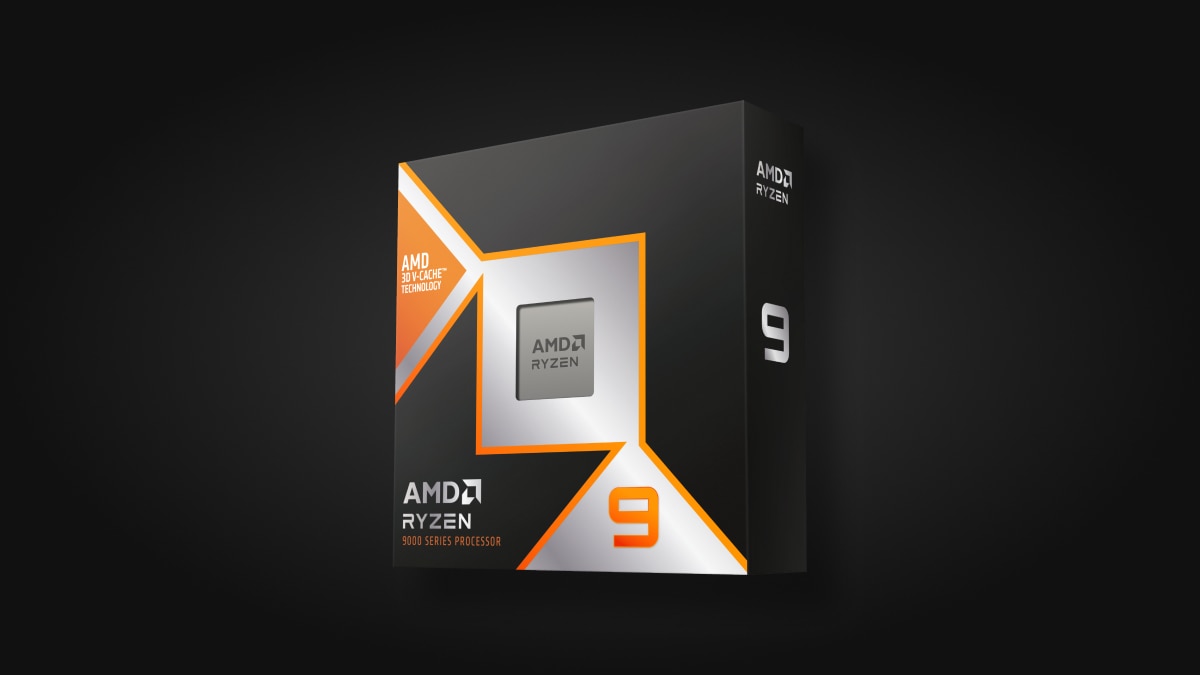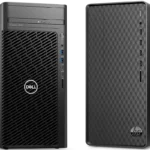AMD is charging ahead on all fronts in 2025, pushing CPU innovation in gaming, content creation, and enterprise workstations. With Zen 5 chips already hitting desktops and Threadripper dominating the high-end market, the red team is now teasing next-gen Zen 6 CPUs—while also addressing serious new security vulnerabilities. Here’s a detailed breakdown of what’s happening across the Ryzen ecosystem and what it means for you.
1. Zen 6 Ryzen: “Medusa Ridge” Prepares to Strike

The next generation of Ryzen, codenamed Medusa Ridge, is already being tested by AMD partners. Built on the Zen 6 architecture, these chips will continue AMD’s chiplet-based innovation with refinements that focus on modest IPC (instructions per clock) gains, enhanced energy efficiency, and expanded use of 3D V‑Cache technology.
- AIDA64 pre-release support confirms Zen 6 is real and inbound.
- Expected to scale up to 12-core CCDs, with enterprise/server variants possibly going as high as 256 total cores.
- Enthusiasts speculate about dual 3D V‑Cache CCDs in a future Ryzen 9 chip—hinting at the most cache-heavy gaming CPU AMD has ever built.
- Rumors suggest AMD is aiming for clock speeds approaching or exceeding 7.0 GHz under aggressive boosting conditions—an enormous leap from today’s typical 5.7–5.9 GHz range.
While Zen 6 is likely a 2026 product, the groundwork is being laid now, and motherboard vendors are already preparing new platforms for AM5+ or AM6 sockets.
2. Zen 5 “Granite Ridge” Hits the Market – and Hard
AMD’s current generation, Zen 5, launched under the Ryzen 9000 “Granite Ridge” branding, and it’s already a game-changer—literally. The Ryzen 9 9950X3D leads the pack with 16 cores, second-gen 3D V‑Cache, and some of the best gaming performance we’ve ever seen on desktop.
Key highlights:
- Up to 49% performance improvement in specific workloads compared to Ryzen 7000 series chips.
- 144MB of cache on select models using AMD’s vertical stacking technology.
- Improved Eco Mode and per-core overclocking, giving enthusiasts more tuning flexibility.
The 9950X3D is especially dominant in CPU-bound games like Cities: Skylines II, Total War, and Starfield, outperforming Intel’s 14th Gen i9 in many benchmarks by a wide margin while consuming less power.
3. Threadripper 9000 Series: Power Redefined
At the top of AMD’s food chain sits the Ryzen Threadripper 9000 series, built on Zen 5 and aimed squarely at content creators, AI developers, and heavy multitaskers. This isn’t just workstation performance—it’s borderline supercomputing in a single CPU socket.
What’s new:
- The Threadripper Pro 9995WX with 96 cores is showing ~14% single-thread performance uplift over its Zen 4 predecessor, and it dominates in multi-threaded workloads.
- The Threadripper 9980X, now officially on sale for $5,198, smashed records with a PassMark score over 147,000, making it the world’s fastest publicly available CPU for multi-threaded tasks.
These chips use AMD’s WRX90 and TRX50 platforms, supporting 8-channel DDR5 and up to 128 PCIe Gen 5 lanes—ideal for serious creators using multi-GPU setups, fast SSD arrays, or heavy I/O demands.
4. Critical Security Flaws in AMD CPUs: What You Need to Know
In June 2025, AMD disclosed four new CPU vulnerabilities (CVE‑2024‑36348/49/50/57) involving Transient Execution Attacks, which are conceptually similar to Spectre and Meltdown. These flaws target the CPU scheduler and speculative execution logic, allowing potential data leaks under certain conditions.
- Affected processors include Ryzen, EPYC, and Threadripper chips from Zen 1 through Zen 4 (Zen 5/6 expected to have mitigations).
- Microsoft and Linux vendors have already rolled out software patches, but some systems may require BIOS updates or firmware-level mitigation via VERW instructions.
- There may be minor performance penalties in some workloads depending on the system configuration and whether full mitigation is enabled.
AMD urges all users, especially enterprise and cloud environments, to patch immediately.
Why This Matters to You
| User Type | Takeaway |
|---|---|
| Gamers & Enthusiasts | Zen 5 and the upcoming Zen 6 chips are redefining FPS potential with massive cache and energy-efficient performance. |
| Content Creators | Threadripper 9000 offers unmatched performance for video editing, 3D rendering, and simulation work. |
| Security-Conscious Users | Apply firmware and OS updates ASAP—side-channel vulnerabilities are serious risks in shared environments. |
What’s Next for AMD Ryzen?
- Zen 6 (Medusa Ridge) could debut as early as late 2026, but AMD may begin previews by mid-2026 if development stays on track.
- Ryzen 9000 series availability is ramping up globally—expect better pricing as competition heats up.
- Threadripper 9000 reviews will continue to emerge, especially in real-world creative workloads and AI testing.
- AMD may unveil additional X3D variants for the Ryzen 9000 series by early 2026, especially targeting gaming-first builds.
AMD Ryzen 9 3900X: Performance Review
The AMD Ryzen 9 3900X stands as a powerful processor that has made its mark in the desktop PC market since its release. With 12 cores and 24 threads, this CPU offers impressive multi-tasking capabilities for both gaming and productivity tasks. The Ryzen 9 3900X delivers high-performance computing with its 3.8 GHz base clock speed and boost frequency of up to 4.6 GHz, making it suitable for demanding applications despite being an older generation processor.
Built on AMD’s AM4 socket platform, the 3900X features 6MB of L2 cache and a substantial 64MB of L3 cache. This processor comes with AMD’s Wraith cooler and operates at a thermal design power of 105W. While newer CPU models have since surpassed it in benchmarks, many users still find the 3900X provides excellent value, especially when paired with a capable graphics card.
The AMD Ryzen 9 3900X, released in July 2019, was a groundbreaking processor that significantly shifted the landscape of mainstream desktop CPUs. Built on the Zen 2 architecture and a 7nm manufacturing process, it brought an unprecedented 12 cores and 24 threads to the AM4 platform, a core count previously reserved for AMD’s high-end Threadripper or Intel’s HEDT (High-End Desktop) offerings.
This guide provides a comprehensive review of the AMD Ryzen 9 3900X’s performance, covering its strengths, weaknesses, and suitability for various workloads.
AMD Ryzen 9 3900X: Performance Review
Key Specifications
- Cores/Threads: 12 Cores / 24 Threads
- Base Clock: 3.8 GHz
- Max Boost Clock: Up to 4.6 GHz
- L3 Cache: 64 MB
- TDP: 105W
- Socket: AM4
- Architecture: Zen 2 (Matisse)
- Process Technology: 7nm
- PCIe Support: PCIe 4.0
Performance Highlights
The Ryzen 9 3900X’s core strength lies in its exceptional multi-threaded performance, making it a powerhouse for productivity and content creation tasks.
1. Productivity and Content Creation
This is where the 3900X truly shines. Its 12 cores and 24 threads provide a massive advantage in applications that can leverage multiple cores effectively.
- Video Editing and Rendering: For tasks like 4K video editing, 3D rendering (Blender, Cinema 4D), and complex simulations, the 3900X delivers superb performance, often outperforming similarly priced Intel competitors with fewer cores. The high thread count allows for faster encoding, rendering times, and smoother multitasking with demanding applications.
- Software Development and Compilation: Compiling large codebases or running virtual machines benefits significantly from the 3900X’s extensive core count and multi-threading capabilities.
- Data Compression/Decompression: Applications like 7-Zip show strong performance due to the CPU’s ability to handle multiple simultaneous tasks.
- Office and Web Browse: While overkill for basic office work and web Browse, the 3900X provides an extremely snappy and responsive experience.
2. Gaming Performance
While the 3900X is a formidable CPU, its gaming performance, particularly at 1080p, was initially a touch behind Intel’s equivalent at the time (like the Core i9-9900K) in some titles. However, the difference often narrows at higher resolutions (1440p and 4K) where the GPU becomes the primary bottleneck.
- High-Resolution Gaming: At 1440p and 4K, where the demands on the graphics card are much higher, the 3900X generally holds its own very well, providing excellent frame rates and smooth gameplay when paired with a capable GPU.
- 1080p Gaming: In some CPU-intensive games at 1080p, the Intel competition might have a slight edge in raw average FPS. However, the 3900X still delivers a fantastic gaming experience, especially for users who aren’t chasing every last frame in competitive scenarios.
- Future-Proofing: The high core count and PCIe 4.0 support provide a degree of future-proofing for games that increasingly utilize more CPU threads.
3. Power Consumption and Thermals
The 3900X has a TDP of 105W. While it consumes a good deal of power under heavy load, its 7nm architecture contributed to good power efficiency for its performance class at the time of its release. AMD included the Wraith Prism cooler with the retail package, which is a decent stock cooler, but for sustained heavy workloads or overclocking, an aftermarket air cooler or an AIO liquid cooler is recommended to ensure optimal performance and lower temperatures.
4. Overclocking
The 3900X offers an unlocked multiplier, making overclocking straightforward. However, like many Ryzen processors, the headroom for manual all-core overclocking is often limited beyond its stock boost clocks. Precision Boost Overdrive (PBO) can offer some automatic performance gains by allowing the CPU to boost higher within its thermal and power limits.
Advantages
- Exceptional Multi-threaded Performance: Ideal for content creators, developers, and users with heavy multi-tasking needs.
- PCIe 4.0 Support: One of the first consumer CPUs to support this faster interface, offering increased bandwidth for compatible SSDs and future GPUs.
- Good Value Proposition (at launch): Offered a significant core count advantage over Intel at a comparable price point, blurring the lines between mainstream and HEDT platforms.
- AM4 Platform Longevity: The AM4 socket offered a good upgrade path, allowing users to potentially upgrade to newer Ryzen CPUs without changing their motherboard (depending on the motherboard chipset).
Disadvantages
- Single-Core Performance: While strong, it was occasionally slightly behind Intel’s contemporary offerings in some highly single-threaded applications and games at 1080p.
- Overclocking Headroom: Limited manual overclocking potential compared to some Intel chips, as AMD’s Precision Boost already pushes the CPU close to its limits.
- Cooling Requirements: Requires adequate cooling, especially for sustained heavy loads, despite the included Wraith Prism.
Conclusion
The AMD Ryzen 9 3900X was a monumental achievement for AMD, bringing high core count performance to the mainstream desktop market. For users primarily engaged in productivity tasks, content creation, streaming, or professional workloads, the 3900X remains a highly capable processor, offering immense multi-threaded power.
For gaming-focused users, while newer generations and AMD’s own X3D chips offer better raw gaming performance, especially at 1080p, the 3900X still provides a very strong gaming experience, particularly at higher resolutions where the GPU takes over more of the workload. Its versatility and robust multi-core capabilities make it a compelling choice for a balanced system that handles both work and play with ease. If you can find it at a good price today, it still offers a lot of value for its core count and overall capabilities.
Key Takeaways
- The Ryzen 9 3900X features 12 cores and 24 threads with a boost clock of 4.6 GHz, offering strong multi-tasking performance.
- Despite being an older generation processor, it remains capable for both gaming and productivity tasks when paired with appropriate components.
- The AM4 socket compatibility gives users flexibility with motherboard options and potential upgrade paths.
Technical Specifications
The AMD Ryzen 9 3900X delivers impressive specifications that position it as a high-performance desktop processor. Built on AMD’s Zen 2 architecture, this CPU offers substantial processing power while maintaining reasonable power consumption.
Core and Thread Architecture
The Ryzen 9 3900X features a 12-core design with 24 threads through AMD’s Simultaneous Multi-Threading (SMT) technology. This architecture provides excellent multitasking capabilities, making it ideal for content creators, streamers, and power users who run multiple demanding applications simultaneously.
The processor is built on AMD’s 7nm manufacturing process, which allows for greater efficiency and performance compared to previous generations. Its chiplet design consists of three dies: one I/O die and two core complex dies (CCDs).
Each CCD contains 6 cores, combining for the total of 12 cores. This design helps distribute heat more effectively across the processor and allows for better yields during manufacturing.
Operating Frequencies and Boost Clock
The Ryzen 9 3900X operates at a base clock frequency of 3.8 GHz, providing solid performance for everyday computing tasks. Under demanding workloads, the processor can boost individual cores up to 4.6 GHz using AMD’s Precision Boost 2 technology.
This dynamic frequency scaling adjusts performance based on thermal headroom, power delivery, and workload demands. The boost algorithm constantly monitors these factors to maximize performance while maintaining stability.
The processor also supports Precision Boost Overdrive, an optional feature that allows the CPU to exceed its rated boost clocks when adequate cooling and power delivery are available. This can provide additional performance for users with high-end cooling solutions.
Cache and Memory Support
The Ryzen 9 3900X comes with a substantial cache hierarchy to minimize memory latency and improve performance:
- L1 Cache: 768 KB (64 KB instruction + 32 KB data per core)
- L2 Cache: 6 MB (512 KB per core)
- L3 Cache: 64 MB (32 MB per CCD)
This large 64 MB L3 cache significantly improves data access times and overall system responsiveness compared to previous generations.
For memory support, the 3900X includes a dual-channel DDR4 memory controller with native support for DDR4-3200 memory speeds. Higher memory frequencies can be achieved through overclocking, with many users successfully running memory at 3600 MHz or higher for optimal performance.
Thermal Design and Power Management
The Ryzen 9 3900X has a Thermal Design Power (TDP) rating of 105W, indicating the amount of heat the cooling system must dissipate during typical operation. This relatively modest power consumption for a 12-core processor is made possible by the efficient 7nm manufacturing process.
The processor uses AMD’s AM4 socket, ensuring compatibility with a wide range of motherboards across different chipsets. For optimal performance, AMD recommends pairing the 3900X with X570 or B550 chipset motherboards.
Temperature monitoring and power management are handled through AMD’s SenseMI technology suite. This includes features like Pure Power and Precision Boost, which dynamically adjust power consumption based on workload demands.
The 3900X comes with a Wraith Prism RGB cooler in retail packaging, which provides adequate cooling for stock operation. However, enthusiasts seeking maximum boost clocks may benefit from aftermarket cooling solutions.
Performance and Benchmarking
The AMD Ryzen 9 3900X delivers impressive performance across multiple scenarios, outperforming many competitors in its price range. Benchmark results consistently demonstrate its strong multi-core capabilities, making it a versatile choice for various computing needs.
Gaming and General Use
The Ryzen 9 3900X handles gaming workloads exceptionally well, though its true strength lies in multi-threaded applications. When paired with a powerful GPU like the RTX 2080 Ti, users report solid 1080p gaming at 144fps without issues.
In general use scenarios, the processor feels responsive and snappy. Day-to-day tasks benefit from the high core count, allowing for seamless multitasking even under demanding conditions.
Compared to its predecessor, the Ryzen 7 2700X, the 3900X shows significant improvements in single-core performance, which directly benefits gaming and light productivity tasks.
The processor’s boost clock reaches up to 4.6GHz under ideal conditions, providing extra performance headroom when needed for short bursts of intensive workloads.
Professional Applications
In professional workloads, the Ryzen 9 3900X truly shines. Cinebench scores reveal its processing prowess, with the R20 benchmark showing it significantly outperforming the Intel Core i9-9900K in multi-threaded tests.
According to PCMag, the 3900X scored just under 3,000 points in Cinebench’s all-cores test, handily beating the i9-9900K. This advantage makes it particularly attractive for content creators, 3D artists, and video editors.
Geekbench 6 results further confirm the processor’s capabilities in professional applications. The 12 cores and 24 threads provide excellent parallel processing performance for rendering, compilation, and scientific workloads.
Software that can utilize multiple cores benefits tremendously from the 3900X’s architecture, making complex tasks complete faster than comparable 8-core alternatives.
Overclocking Capabilities
The 3900X offers decent overclocking potential, though it already runs near its limits at stock settings. Many users find the processor performs best when allowing AMD’s Precision Boost to handle frequency adjustments automatically.
Manual overclocking can yield all-core frequencies of 4.2-4.3GHz with proper cooling solutions. However, power consumption increases significantly when pushing beyond factory settings.
Temperature management becomes crucial when overclocking. Under ambient cooling with quality air or AIO liquid coolers, the processor maintains reasonable temperatures even under load.
The processor’s power consumption rises noticeably during heavy workloads, particularly when overclocked. A quality power supply and adequate cooling are essential for stable operation when pushing the limits of this CPU.
Platform Ecosystem and Compatibility
The AMD Ryzen 9 3900X operates within a robust platform ecosystem that offers substantial hardware compatibility and next-generation features. This processor introduced several important advances to the AMD platform while maintaining backward compatibility with existing systems.
Chipset and Motherboard Support
The Ryzen 9 3900X utilizes the Socket AM4 platform, providing compatibility with a wide range of motherboards. For optimal performance, the X570 chipset was designed specifically to complement Ryzen 3000 series CPUs, offering the most complete feature set. However, the processor maintains compatibility with older 400-series and 300-series chipsets (like X470, B450, and X370) following BIOS updates.
Motherboard manufacturers including ASUS, MSI, Gigabyte, and ASRock developed extensive product lines to support the 3900X. Premium X570 boards provide enhanced power delivery systems necessary for the 12-core chip’s power requirements.
Users should note that while older motherboards can run the 3900X, they may limit access to newer features. B550 motherboards, released later, offer a mid-range alternative with many advanced features at lower price points.
PCIe 4.0 Integration
The Ryzen 9 3900X marked a significant milestone as part of the first consumer platform to support PCIe 4.0 technology. This doubled the bandwidth compared to PCIe 3.0, enabling faster data transfer rates of up to 16 GT/s per lane.
PCIe 4.0 support primarily benefits storage and graphics solutions. NVMe SSDs utilizing PCIe 4.0 can achieve sequential read speeds exceeding 5,000 MB/s, a substantial improvement over PCIe 3.0 drives. This capability is particularly valuable for content creators and professionals working with large files.
It’s important to note that PCIe 4.0 functionality is only available when the 3900X is paired with X570 or B550 motherboards. When installed in older motherboards, the system defaults to PCIe 3.0 speeds, maintaining backward compatibility while sacrificing the bandwidth advantage.
Frequently Asked Questions
The Ryzen 9 3900X has generated many questions from potential users about its capabilities, cooling requirements, and value proposition. Below are answers to some of the most common inquiries based on user experiences and technical specifications.
What are the benchmark performance results for the Ryzen 9 3900X in various applications?
The Ryzen 9 3900X performs exceptionally well in multi-threaded applications. In productivity tasks like video rendering and 3D modeling, it often outperforms similarly priced competitors.
For gaming, it delivers solid performance but doesn’t necessarily outshine CPUs with fewer cores that are specifically optimized for gaming workloads. The 3900X shines brightest when users run multiple applications simultaneously.
How does the Ryzen 9 3900X pricing compare to similar high-performance CPUs?
At launch, the Ryzen 9 3900X offered significant value compared to Intel alternatives with similar core counts. The processor delivered comparable or better multi-threaded performance at a lower price point.
Current pricing fluctuates based on market conditions and newer CPU generations. Many users find the 3900X represents good value when considering its 12 cores and 24 threads for productivity workloads.
When was the Ryzen 9 3900X officially released to the market?
The Ryzen 9 3900X was officially released in July 2019 as part of AMD’s third-generation Ryzen desktop processors. It was one of the flagship models of the Zen 2 architecture lineup.
The processor garnered significant attention for bringing high core counts to mainstream desktop platforms at competitive price points.
What improvements does the Ryzen 9 3900X offer over previous generations?
The Ryzen 9 3900X introduced the Zen 2 architecture with a 7nm manufacturing process, a significant improvement over previous generations. This enabled higher clock speeds while maintaining power efficiency.
It offered improved IPC (Instructions Per Clock) performance of approximately 15% over the previous generation. The processor also featured PCIe 4.0 support, doubling the bandwidth compared to PCIe 3.0.
Can the Ryzen 9 3900X be utilized effectively for professional video editing and rendering tasks?
Yes, the Ryzen 9 3900X excels in professional video editing and rendering tasks. Its 12 cores and 24 threads make it particularly well-suited for these workloads.
Users report excellent performance in applications like Adobe Premiere Pro, DaVinci Resolve, and 3D rendering software. The high core count allows for efficient multitasking between rendering, editing, and other background processes.
What are the thermal management requirements for maintaining optimal performance of the Ryzen 9 3900X?
The Ryzen 9 3900X benefits from good cooling solutions beyond the stock cooler, especially for sustained workloads. While the included Wraith Prism cooler is adequate for stock settings, many users opt for better cooling.
For those who plan to maximize performance or consider overclocking, a high-quality air cooler or AIO liquid cooling solution is recommended. Proper case airflow also helps maintain optimal operating temperatures and prevent thermal throttling.







